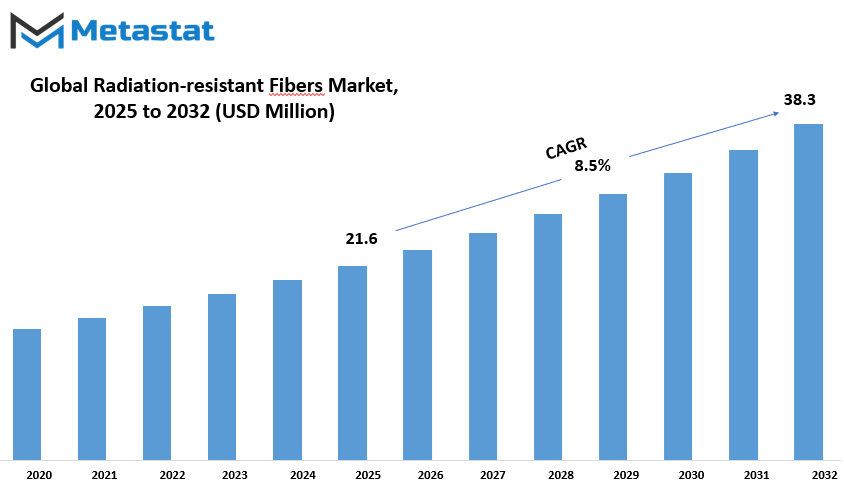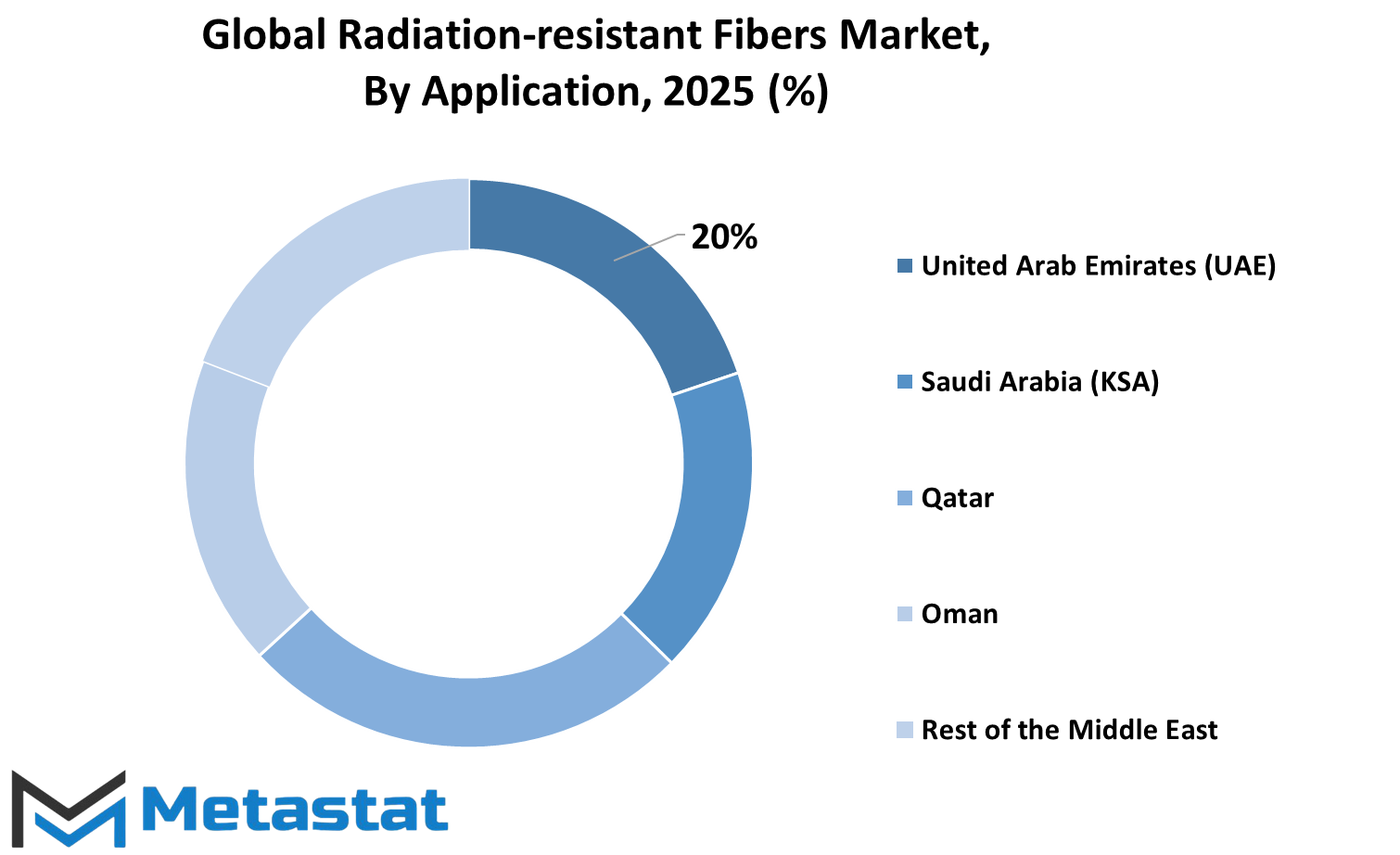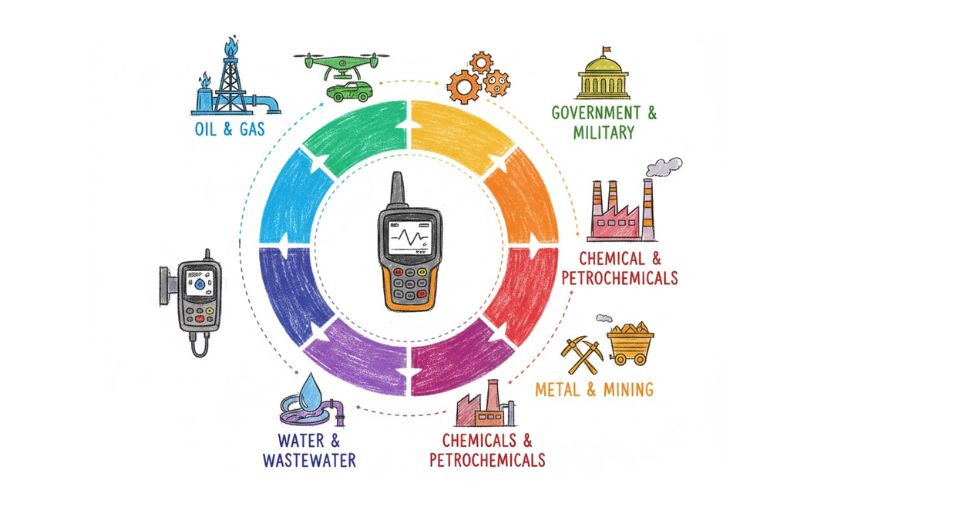MARKET OVERVIEW
The Global Radiation-resistant Fibers market will continue forging its own way, having adaptive technologies and targeted applications across the defense, aerospace, healthcare, and nuclear sectors. The market already possesses a working ability to supply fibers resisting extreme ionizing radiation, and now other notable changes await, many stretching beyond plausible immediate expectations. With increasingly sophisticated safety programs and materials for critical infrastructure, the demand for fibers that comply under radiation will be a steadily influencing factor for future developments.
Moving forward, the Global Radiation-resistant Fibers market is slated to be spurred into renewed momentum by the incorporation of next-generation materials that have been designed to withstand such challenging environments while providing enhanced functionality. This shift will respond not only to present-day requirements, but it will also create unexplored possibilities for applications needing fibers capable of surviving hostile conditions. One such application would involve consideration of future fibers for spacecraft and related equipment that might undergo exposure to cosmic radiation on a level far beyond anything conceived, as deep space exploration progresses. Equally compelling is the rapid development of medical interventions, from proton therapy to other advanced diagnostic applications, which will demand fibers guaranteeing patient safety and long-term durability of equipment exposed regularly to radiation.
In parallel, emerging nuclear energy projects, especially those involving small modular reactors and fusion technology, will demand advanced fiber solutions that surpass existing performance standards. The Global Radiation-resistant Fibers market will thus become integral to both safeguarding human health and maintaining operational efficiency in zones where exposure risks remain high. This anticipated trajectory will encourage manufacturers to rethink design methodologies, focusing on fiber compositions that not only resist radiation but also exhibit flexibility, thermal stability, and longevity.
The expansion of research into composite materials will further strengthen the position of this market on the global stage. Laboratories worldwide will increasingly test hybrid fibers that blend traditional radiation resistance with new mechanical properties, aiming to solve current limitations. These innovations will lead to fibers that function seamlessly in diverse sectors, from military-grade textiles to sophisticated communication systems deployed in radioactive zones. Moreover, partnerships between academic institutions and commercial players will foster continuous advancements, ensuring that the Global Radiation-resistant Fibers market evolves in tandem with broader industrial shifts.
The influence of regulatory frameworks, especially in nations that take firm interest in nuclear energy and defense, will contribute to shaping future market scenarios. Increased vigilance with regard to safety and environmental protection could mean that manufacturers will be forced to equally consider the radiation resistance capacity of their products and the environmental impact of the production process. Thus, a dual consideration of performance and sustainability will lead to paradigm shifts in radiation-resistant fiber development and applications in the coming years.
Implying that the Global Radiation-resistant Fibers market would remain for a while, interested would direct its course under innovation and peculiar alliances with diverse industries in which radiation-resistant fibers give value. The future dynamics will, therefore, depend on the foresight of key players in identifying demands outside traditional applications. If worldwide advancement in science, defense, and healthcare continues, the demand for radiation-resistant fibers will remain; hence, this market shall remain as one of the vital foundations in current industrial advancement.
Global Radiation-resistant Fibers market is estimated to reach $38.3 Million by 2032; growing at a CAGR of 8.5% from 2025 to 2032.

GROWTH FACTORS
The Global Radiation-resistant Fibers Market rakes in some consistent profits with its growing importance in different key industries. One of the most important market drivers is the demand for materials that are durable and reliable for nuclear as well as defense industries. Industries are most reliant on materials that can get through the harshest environments, especially the high radiation dose, without being compromised in strength and performance. As most nations now are engaged in quite a continuous path toward the strengthening of nuclear capabilities and defense systems, so, therefore, the future prospect concerning advanced materials such as radiation-resistant fibers will continue to increase. There is also a marked rush forwarded boost in investments concerning space exploration and satellite technologies. Space missions call for materials that can perform under extreme conditions, particularly extreme radiation. Such include satellites, manned spacecraft, and even deep space probes. Such growing interest in space-related projects serves as a major impetus to the radiation-resistant fibers marketplace.
There are challenges in this market too. The most common challenge would be the very high production costs. Radiations resistant fibers are manufactured from very complex processes and expensive specialized equipment resulting in their high production costs. Hence, these materials become difficult to adopt in other sectors that are highly cost sensitive. Limited availability of raw materials is another problem the market is facing.
However, this is far from being the only constraint for growth in such a "otherwise-very-promising" market. Clear openings exist through which the market may likely continue to expand in coming years. The medical field, particularly the development of its applications in medical imaging and radiology, has a lot of promise when it comes to future expansion. Equipment exposed to radiation continually would thus be in higher demand for better protective materials to be developed. Today, radiation-resistant fibers are becoming even more indispensable for safety and performance retention of medical devices. Emerging continents are also putting radiation safety at the core of new social and economic developments in the upgrading and improving national infrastructures. This shift opens a new opportunity in developing markets for radiation-resistant materials in construction and other related applications. The pastures of such growing and modernizing countries should further contribute to the expansion of this market with the need for safer, more durable materials.
MARKET SEGMENTATION
By Types
The demand for surfaces is increasing in response to the need for industries to develop materials that can resist intense environments, especially where radiation has to be present. End-use applications include nuclear power plants, hospitals, medical facilities, aerospace applications, and defense, because these fibers are retained in strength and activity even after due exposure to high radiation levels. With continuous improvement of technology, safety standards are on the increase; thus, the demand for reliable and durable materials which will be passed for use under such conditions will increase.
One of the prominent segments of the market considered here is fiber types. Next, the market is further categorized into Single-mode Fibers and Multi-mode Fibers. Single-mode Fibers are valued at around $13.2 million and are particularly used in settings where signals need to travel long distances without significant loss. Multi-mode Fibers are used for shorter distances. They are generally wider in core size to permit numerous light signals to pass simultaneously, thus making them useful for data transfer over a shorter distance. The roles played by both types of these fibers in a communication system are important and their employment is dependent on the specific requirement of the scheme or application.
The growth of the radiation-resistant fibers market is fueled by safety and performance concerns in high-risk conditions. For example, in nuclear installations, equipment must work in the presence of strong radiation to prevent failures that could lead to adverse consequences. Similarly, in the medical field, especially in cancer treatment devices, fibers must retain operationality despite continuous exposure to radiation.
Aerospace and defense sectors are also significant driving factors for this market. Space missions, satellites, and military operations often operate in extreme conditions, including radiation produced by the sun and other sources. The use of fibers that resist degradation under such exposure ensures that communication and control systems remain stable and reliable.
By Applications
Since the specific requirements for materials that are able to withstand harsh conditions arose, the markets for radiation-resistant fibers are growing gradually on a global scale. These fibers resist damage from radiation exposure, making them highly valuable in all risky industries, including Aerospace and Defense, Military, Atomic Energy Industry, Petroleum and Offshore Exploration, Medical Equipment, and Others. While all these sectors utilize radiation-resistant fibers for their own applications, safety, durability, and performance in hostile environments remain the pertinent criteria common to them all.
Radiation-resistant fibres protect equipment and structures from cosmic rays and high-energy radiation in Aerospace and Defense applications. These fibres assure the long-term reliability of aircraft and spacecraft functioning within extreme risk environments beyond the limits of conventional materials. The Military uses these fibers as well in cases involving nuclear technology use or action in hazardous areas. The additional layer of protection afforded by these fibers enhances the safety of personnel and the successful outcome of missions.
Another possibility is to consider the atomic energy sector as a major user. In a nuclear power plant, radiation-resistant fibers form an essential component, including cables, seals, and protective clothing. They act as deterrents against any radiation leakages that would compromise the safety of workers or the surrounding environment in conjunction with other conventional materials. In petroleum and offshore explorations, there exists another market for these fibers. Equipment exposed to radiation and extreme pressure is used in deep-sea and oil rig operations. The fibers bolster the cable and protective gear against all performance abuses in those conditions.
In addition to medical equipment, radiation-resistant fibers are used in diagnostic imaging and cancer therapy. They protect sensitive equipment from radiation damage, thereby preserving accuracy and patient safety. Lastly, everything else goes into a vast realm of other applications, namely from research laboratories to other specialized industrial settings and wherever exposure to radiation is a concern.
In summary, the increased requirement of safety and performance across numerous industries drives the demand for radiation-resistant fibers. As these sectors venture into more extreme conditions with advances in technology, the need for such fibers will increase even further. Besides, in a nutshell, fibers protect people, equipment, and infrastructure; therefore, this market continues to evolve and grow in meeting modern industry challenges.

REGIONAL ANALYSIS
The global Radiation-resistant Fibers market is geographically divided into differentiated regions for the better understanding of the market existing in various parts of the world: North America, Europe, Asia-Pacific, South America, and the Middle East & Africa. In the breakdown of North America, we find the United States, Canada, and Mexico. These three countries are important to the growth of the market: the United States is important due to its technological advancements and its established industries needing radiation-resistant materials. Canada and Mexico contribute but a little and mostly through industrial and medical applications. Europe is formed by the UK, Germany, France, Italy, and the rest of Europe. Germany and the UK are the dominant players in this region; their well-developed industrial base with the growing attention to safety standards drives the requirements. While France and Italy are smaller, they keep seeing steady advancement, especially in nuclear energy and healthcare applications. The Rest of Europe contains all other countries, which are not as dominant but mostly contribute to the overall market landscape.
Asia-Pacific is also a very important region, and it includes India, China, Japan, South Korea, and other countries in Asia-Pacific. China and Japan lie at the head here, with massive investments in advanced technologies and good infrastructure in the electronics and nuclear power sectors. Other parts of the Asia-Pacific region are still using these fibers for gradual adoption and hence potential future growth. South America is segmented into Brazil, Argentina, and the rest of South America. Brazil leads the region, focusing on improving its industrial and healthcare sectors.
Argentina has lesser contributions with other countries and is expected to grow as its sectors modernize. Finally, the Middle East & Africa region is cut into Gulf GCC Countries, Egypt, South Africa, and the Rest of Middle East & Africa. By far ahead in the market are dominant GCC Countries because of their investment in energy projects and technological development. India and South Africa are well-known growing markets. Others are advancing steadily. Each of these regions has a significant independent role, and all formed together are significant to the global market of the Radiation-resistant Fibers.
|
Forecast Period |
2025-2032 |
|
Market Size in 2025 |
$746.2 million |
|
Market Size by 2032 |
$1,092.3 Million |
|
Growth Rate from 2025 to 2032 |
5.6% |
|
Base Year |
2024 |
|
Regions Covered |
North America, Europe, Asia-Pacific, South America, Middle East & Africa |
COMPETITIVE PLAYERS
Development of the global radiation-resistant fibers market is progressive owing to an increase in demand from various industries such as aerospace, defense, nuclear power, and medical equipment. These fibers are designed such that they do not lose strength and operating performance even under radiation levels that would otherwise destroy normal materials. This makes them very important in places where safety and durability are highly critical, for example, in nuclear power plants: cables and PPE made out of them are used for safety and continuous operations. Those are also used in imaging equipment and cancer treatment machines for the same purpose, so the device can be precise and reliable over longer periods.
Continuous demand for reliable materials that can withstand harsh conditions, without breaking down, drives this market. Beyond that, advances in technology, thus industries pushing boundaries of where and how the materials are used, have made radiation resistance more valuable. There are safety standards and regulations growing in numbers that motivate companies toward the adoption of stronger and more reliable materials to avoid risks.
Notable companies working in the industry of radiation-resistant fibers are Exail, LEONI Group, Humanetics Group (Fibercore), Sedi-Aki, Coherent Corp., Fujikura Ltd., OFS Fitel, LLC, Molex, LLC, and Yangtze Optical Fibre and Cable Ltd. These companies are not only supplying existing demand, but they are also innovating and improving their products. Their major concern is to develop fibers that are stronger, more flexible, and easier to work with in multiple applications. Research and development have a huge impact on this market, as manufacturers strive to fulfill ever-changing needs.
With the increasing investment in space exploration and renewable energy, two areas where radiation poses great challenges, it is expected that something really big lies ahead for the radiation-resistant fibers market. With an extra thrust given by developing nuclear energy capabilities across various countries, the demand for this specialized fiber will see massive growth. While some challenges remain, such as high production costs and complicated manufacturing processes, the persistent innovation and commitment from key players will drive the market forward. Radiation-resistant fibers will thus continue to play an important role in safeguarding many critical technologies.
Radiation-resistant Fibers Market Key Segments:
By Types
- Single-mode Fibers
- Multi-mode Fibers
By Applications
- Aerospace and Defense
- Military
- Atomic Energy Industry
- Petroleum and Offshore Exploration
- Medical Equipment
- Others
Key Global Radiation-resistant Fibers Industry Players
- Exail
- LEONI Group
- Humanetics Group (Fibercore)
- SEDI-ATI
- Coherent Corp.
- Fujikura Ltd.
- OFS Fitel, LLC.
- Molex, LLC
- Yangtze Optical Fibre and Cable Ltd.
WHAT REPORT PROVIDES
- Full in-depth analysis of the parent Industry
- Important changes in market and its dynamics
- Segmentation details of the market
- Former, on-going, and projected market analysis in terms of volume and value
- Assessment of niche industry developments
- Market share analysis
- Key strategies of major players
- Emerging segments and regional growth potential







 US: +1 3023308252
US: +1 3023308252






